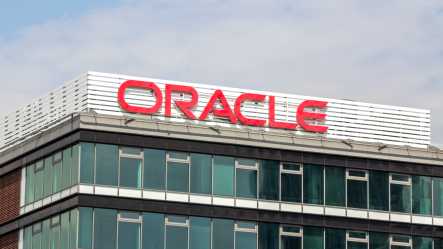Amid rumors that the company could be acquired, Palm reported Thursday that its third-quarter profit was US$16.5 million, down from $19.8 million for the same quarter last year.
Palm recorded $410.5 million in revenue thanks to strong sales of its Treo smart phone, up from the $388.5 million the company collected for the third quarter of 2006.
Excluding certain charges, the company generated earnings of $0.16 per share for the period ending Feb. 28, falling below last year’s mark of $0.19 but beating estimates from Thomson Financial analysts of $0.12 on a non-GAAP (generally accepted accounting principles) basis. Palm’s revenue also beat the Wall Street estimate of $403.6 million.
The company’s news release did not mention persistent industry buzz that the company could be acquired, by either Motorola or Nokia. Company leaders forecast a strong fourth quarter, with revenue expected to fall between $400 million and $410 million thanks to continuing global smart-phone sales, said company CEO Ed Colligan in a statement.
Asked directly about the acquisition rumors during a conference call with analysts, Palm CFO Andy Brown declined to say anything specific. “There’s a lot of rumors and speculation out there, and it’s our practice not to comment on that kind of stuff,” he said.
Brown did describe the changing face of Palm’s revenue, which included $354 million from smart-phone sales and only $57 million from handhelds. That is a large swing from 1996, when Palm launched its Palm Pilot handheld organizer, a product that helped define the PDA market and generated all the company’s revenue. Today Palm is migrating from that simple PC-synchronized device to phone-enabled handhelds.
“The revenue mix was 86 percent from smart phones and 14 percent from handhelds, as we continue to drive our company to the more profitable smart-phone business,” he said. That change is happening fast: Palm’s handheld revenue for the quarter was down 44 percent from the same period last year.
On the smart-phone side, Palm now has four models in production, including the newest, the Treo 680 and Treo 750, Colligan said. Although the units sell at higher prices than do competing smart phones, Palm has an advantage in the products’ diversity, he said. The lineup includes both the Palm OS and Microsoft’s Windows Mobile OS, and spans three different radio technologies: evolution-data optimized, universal mobile telecommunications system and general packet radio service/enhanced data rates for GSM evolution.
Just before the earnings call began, Palm also released the news that it had won a round in its patent fight against NTP, the same company that won a $612.5 million legal award in 2006 from Research in Motion, after a similar fight about RIM’s BlackBerry.
NTP filed a patent infringement lawsuit in November, alleging that Palm had illegally used NTP’s wireless e-mail technology and asking the court to stop Palm from selling handsets with mobile e-mail capability and to fine the company for damages. NTP has licensed the same technology to Nokia and Good Technology, which was acquired in 2006 by Motorola.
On Thursday, a judge in the U.S. District Court for the Eastern Division of Virginia granted a stay in the case and granted Palm’s motion to strike a portion of the complaint, Palm said.
-Ben Ames, IDG News Service (Boston Bureau)
Related Links:
Report: Palm Discussing Strategic Options With Bankers
- NTP Hits Palm With Patent Infringement Suit
Check out our CIO News Alerts and Tech Informer pages for more updated news coverage.








